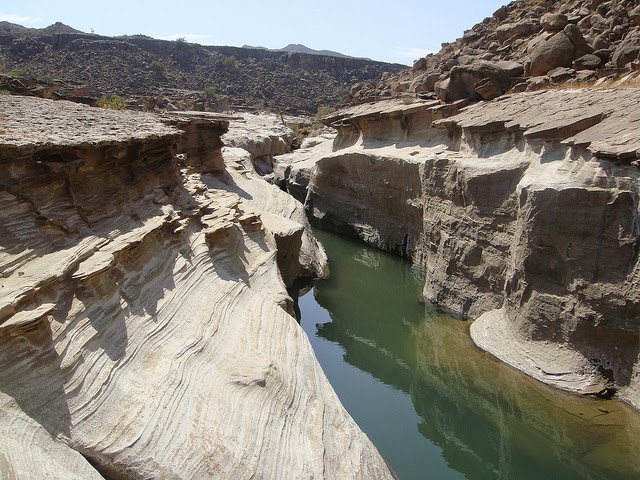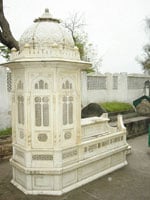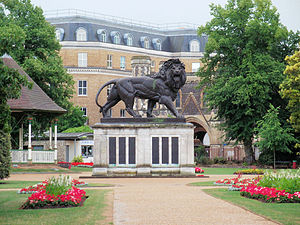Roof Top of the World is Situated in Khyber Pakhtunkhwa and Northern Areas of Pakistan and it Posses Hundreds of Mountains that are Highest in the World that it Shares with China , Afghanistan , Nepal and India
Northern areas of Pakistan Known as Gilgit & Baltistan are Right next to Khyber Pakhtunkhwa and you have to Pass from this Area to Reach the Northern Areas and the Roof top of the World where Hundreds of Mountains are Situated that are more then 7000 Meters High and also there are 5 Mountains that are Included in the 8000 meters plus 14 Mountains of the World
Karakorum Range of Mountains :
Karakoram is a Turkic term meaning black gravel. The name was first applied by local traders to the Karakoram Pass.
Karakorum is also a Sub Range of Hindu Kush Mountain that is found in Pakistan in the Khyber Pakhtunkhwa and Northern Area of Gilgit and Baltistan. The Karakoram is in one of the world's most geologically active areas, at the boundary between two colliding continents of Europe and Asia and Found on Boundary of Pakistan Durand line with Afghanistan and in North from these Mountain Ranges this Boundary starts and finished near Arabia Sea.
 K2 in Karakorum
K2 in KarakorumA significant part, 28-50% of the Karakoram Range is glaciated, compared to the Himalaya (8-12%) and Alps (2.2%).Mountain glaciers may serve as an indicator of climate change, advancing and receding with long-term changes in temperature and precipitation.[9] Karakoram glaciers are mostly stagnating or enlarging, because, unlike in the Himalayas, many Karakoram glaciers are covered in a layer of rubble which insulates the ice from the warmth of the sun. Where there is no such insulation, the rate of retreat is high.
The Karakoram, in simplified Chinese: 喀喇昆仑山脉; traditional Chinese: 喀喇崑崙山脈; pinyin: Kālǎkūnlún Shānmài; , Kārākōram; Balti: ཁརན ཨ ཀུརམ Kharan-a-Kuram Uyghur: كاراكورم), is a large mountain range spanning the borders between Pakistan, India and China, located in the regions of Gilgit–Baltistan (Pakistan), Ladakh (India), and Xinjiang region (China).
As subrange of the Hindu Kush Himalayan Range, it is one of the Greater Ranges of Asia. The Karakoram is home to the highest concentration of peaks over 8000m in height to be found anywhere on earth, including K2, the second highest peak in the world 8,611 m (28,251 ft).
 Nanga Parbat
Nanga ParbatThe range is about 500 km (311 mi) in length, and is the most heavily glaciated part of the world outside the polar regions. The Siachen Glacier at 76 kilometres (47 mi) and the Biafo Glacier at 63 kilometres (39 mi) rank as the world's second and third longest glaciers outside the polar regions.
The Karakoram is bounded on the northeast by the edge of the Tibetan Plateau, and on the north by the Pamir Mountains. The southern boundary of the Karakoram is formed, west to east, by the Gilgit, Indus, and Shyok Rivers, which separate the range from the northwestern end of the Himalaya range proper as these rivers converge southwestward towards the plains of Pakistan.
 Broad Peak
Broad PeakThe Tashkurghan National Nature Reserve and the Pamir Wetlands National Nature Reserve in the Karalorun and Pamir mountains have been nominated for inclusion in UNESCO in 2010 by the National Commission of the People's Republic of China for UNESCO and has tentatively been added to the list.
The naming and division of the various subranges of the Karakoram is not universally agreed upon. However, the following is a list of the most important subranges, following Jerzy Wala. The ranges are listed roughly west to east.
Sub Ranges are :1. Batura Muztagh,
2. Rakaposhi-Haramosh Mountains,
3. Spantik-Sosbun Mountains
4. Hispar Muztagh
5. South Ghujerab Mountains
6. Panmah Muztagh
7. Wesm Mountains
8. Masherbrum Mountains
9. Baltoro Muztagh
10. Saltoro Mountains
11. Siachen Muztagh
12. Rimo Muztagh
13. Saser Muztagh
Passes in Karakorum are :From west to east
1. Karakoram Pass
2. Kilik Pass
3. Mintaka Pass
4. Khunjerab Pass (the highest paved international border crossing at 4,693 m (15,397 ft))
5. Shimshal Pass
6. Mustagh Pass
7. Sasser Pass
Karakorum High way Passes through these Mountains and is Marvelous feet of Engineering and one of Highest Highway in the world , and it was Made by Chinese and Pakistani Army Engineers and it is a marvel to See.
The List of Mountains in Karakorum Range are As follows:Nanga Parbat 8,125 Meters high is found in Diamer Region , About 37 Mountains are Found in Gaunche Region , 64 Mountain in Gilgit Region and 50 Mountain in Skardu region all Higher then 7KM or 7000 Meters are found in Northern Areas of Pakistan. All in All 152 Mountains are found in Karkorum Sub range of Hindu Kush Mountains .
 Gasher Brum 2
Gasher Brum 2In This List the 31 Mountains of Pamir Sub Ranger of Hindu Kush Mountains Khyber Pakhtunkhwa about are not included found in Chitral Region also Known as Roof Top of the World .
1 Nanga ParbatHeight Range Group District
8,125 Himalayas Diamer Diamer
2 Saltoro Kangri No. IHeight Range Group District
7,742 Karakoram Soltoro Gaunche
3 Saltoro Kangri II Height Range Group District
7,706 Karakoram Soltoro Gaunche
4 Chhaltoro Gang R1 NHeight Range Group District
7,705 Karakoram Soltoro Gaunche
5 Saser Kangri IHeight Range Group District
7,672 Karakoram Siachen (disputed) Gaunche
6 Mamostong KangriHeight Range Group District
7,516 Karakoram Soltoro Gaunche
7 Saser Kangri EHeight Range Group District
7,513 Karakoram Siachen (disputed) Gaunche
8 Saser Kangri II WHeight Range Group District
7,500 Karakoram Siachen (disputed) Gaunche
9 Saser kangri IIIHeight Range Group District
7,495 Karakoram Siachen (disputed) Gaunche
10 K-12 Height Range Group District
7,469 Karakoram Soltoro Gaunche
11 Teram Kangri 1Height Range Group District
7,463 Karakoram Siachen (disputed) Gaunche
12 Teram Kangri IIHeight Range Group District
7,406 Karakoram Siachen (disputed) Gaunche
13 Rimo (S) No. I Peak 51Height Range Group District
7,385 Karakoram Siachen (disputed) Gaunche
14 Teram Kangri IIIHeight Range Group District
7,382 Karakoram Siachen (disputed) Gaunche
15 Sherpi Kangri I MainHeight Range Group District
7,380 Karakoram Soltoro Gaunche
16 Rimo (S) No. II P-50Height Range Group District
7,373 Karakoram Siachen (disputed) Gaunche
17 Sherpi Kangri No. IIHeight Range Group District
7,370 Karakoram Soltoro Gaunche
18 Sherpi Kangri No. IIIHeight Range Group District
7,300 Karakoram Siachen (disputed) Gaunche
19 Teram kangri IVHeight Range Group District
7,300 Karakoram Siachen (disputed)Gaunche
20 K-6Height Range Group District
7,282 Karakoram Saltoro Gaunche
21 Apsarasas-1Height Range Group District
7,245 Karakoram Siachen (disputed) Gaunche
22 Apsarasas IIHeight Range Group District
7,239 Karakoram Siachen (disputed) Gaunche
23 Apsarasas III EHeight Range Group District
7,236 Karakoram Siachen (disputed) Gaunche
24 Rimo No. II P-49Height Range Group District
7,233 Karakoram Siachen (disputed) Gaunche
25 Apsarasas IVHeight Range Group District
7,227 Karakoram Siachen (disputed) Gaunche
26 Mt. Rose/Singhi KanHeight Range Group District
7,202 Karakoram Siachen (disputed) Gaunche
27 Apsarasas VHeight Range Group District
7,187 Karakoram Siachen (disputed)Gaunche
28 Apsarasas III EHeight Range Group District
7,184 Karakoram Siachen (disputed)Gaunche
29 Apsarasas III WHeight Range Group District
7,181 Karakoram Siachen (disputed) Gaunche
30 Rimo No. IIIHeight Range Group District
7,169 Karakoram Siachen (disputed) Gaunche
31 Un-Named/MasherbrumHeight Range Group District
7,163 Karakoram Siachen (disputed) Gaunche
32 DepakHeight Range Group District
7,150 Karakoram Siachen (disputed) Gaunche
33 Apsarasas (S)Height Range Group District
7,117 Karakoram Siachen (disputed) Gaunche
34 Sherpi KangriHeight Range Group District
7,100 Karakoram Siachen (disputed) Gaunche
35 Link SarHeight Range Group District
7,041 Karakoram Siachen (disputed) Gaunche
36 Apsarasas(E)/Un-NamedHeight Range Group District
7,000 Karakoram Siachen (disputed) Gaunche
37 Chogolisa(W)/PrupooHeight Range Group District
7,000 Karakoram Boltoro Gaunche
38 Ghent IIIHeight Range Group District
7,000 Karakoram Siachen (disputed) Gaunche
39 Kaberi PeakHeight Range Group District
7,000 Karakoram Siachen (disputed)Gaunche
Gilgit Mountains
1 Distaghil Sar MainHeight Range Group District
7,885 Karakoram Hispar Gilgit
2 Kunyang Chhish/MainHeight Range Group District
7,852 Karakoram Hispar Gilgit
3 Masherbrum NE/ (K-1)Height Range Group District
7,821 Karakoram Bagrot Gilgit
4 MasherbrumHeight Range Group District
7,806 Karakoram Bagrot Gilgit
5 RakaposhiHeight Range Group District
7,788 Karakoram Bagrot Gilgit
6 Batura No. IHeight Range Group District
7,785 Karakoram Batura Mustagh Gilgit
7 Batura IIHeight Range Group District
7,762 Karakoram Batura Mustagh Gilgit
8 Distaghil Sar No. IIHeight Range Group District
7,760 Karakoram Hispar Gilgit
9 Kanjut Sar No. IHeight Range Group District
7,760 Karakoram Hispar Gilgit
10 Batura No. IIHeight Range Group District
7,730 Karakoram Batura Mustagh Gilgit
11 Batura IIIHeight Range Group District
7,729 Karakoram Batura Mustagh Gilgit Mustagh
17 Batura IV Height Range Group District
7,594 Karakoram Mustagh Gilgit
18 Batura V Height Range Group District
7,531 Karakoram Batura Mustagh Gilgit
19 Yakshin Gardaan No. IHeight Range Group District
7,530 Karakoram Hispar Gilgit
20 Kunyang Chhish (W)Height Range Group District
7,500 Karakoram Hispar Gilgit
21 Pumari Chhish (W)Height Range Group District
7,492 Karakoram Hispar Gilgit
22 Pasu Massive MHeight Range Group District
7,478 Karakoram Batura Mustagh Gilgit
23 Malubiting (W)_Height Range Group District
7,453 Karakoram Haramosh Gilgit
24 Muchu ChhishHeight Range Group District
7,453 Karakoram Batura Muztagh Gilgit
25 Pumari Chhish (N)Height Range Group District
7,440 Karakoram Hispar Gilgit
26 Yazghil Dome (S)Height Range Group District
7,440 Karakoram Hispar Gilgit
27 Haramosh No. IHeight Range Group District
7,409 Karakoram Haramosh Gilgit
28 Kunyang Chhish (E) Height Range Group District
7,400 Karakoram Hispar Gilgit
29 Pumari Chhish (S)Height Range Group District
7,400 Karakoram Hispar Gilgit
30 Yazghil Dome (N)Height Range Group District
7,400 Karakoram Hispar Gilgit
31 Ultar Sar No. IHeight Range Group District
7,388 Karakoram Batura Mustagh Gilgit
32 Karun KuhHeight Range Group District
7,350 Karakoram Hispar Gilgit
33 Kunyang Chhish WHeight Range Group District
7,350 Karakoram Hispar Gilgit
34 Pumari Chhish S Height Range Group District
7,350 Karakoram Hispar Gilgit
35 Momhil Sar / Peak - 7Height Range Group District
7,343 Karakoram Hispar Gilgit
36 Yutmaru Sar (S)Height Range Group District
7,330 Karakoram Hispar Gilgit
37 Bojohagur DuanasirHeight Range Group District
7,329 Karakoram Batura Mustagh Gilgit
38 Kunyang Chhish (SE)Height Range Group District
7,320 Karakoram Hispar Gilgit
39 MalanghuttiHeight Range Group District
7,320 Karakoram Hispar Gilgit
40 Ultar Sar IIHeight Range Group District
7,310 Karakoram Batura Mustagh Gilgit
41 Yazghil Domes NHeight Range Group District
7,300 Karakoram Hispar Gilgit
42 Malubiting CentralHeight Range Group District
7,291 Karakoram Haramosh Gilgit
43 Rakapohsi (E)Height Range Group District
7,290 Karakoram Bagrot Gilgit
44 Passu/Peak No. 55Height Range Group District
7,284 Karakoram Batura Mustagh Gilgit
45 Pasu Massiv EHeight Range Group District
7,284 Karakoram Batura Muztagh Gilgit
46 Diran /MinapinHeight Range Group District
7,273 Karakoram Bagrot Gilgit
47 Bularang SarHeight Range Group District
7,200 Karakoram Hispar Gilgit
48 Lugpahur Sar MDHeight Range Group District
7,200 Karakoram Hispar Gilgit
49 Lupghar Sar (E)Height Range Group District
7,200 Karakoram Hispar Gilgit
50 Malubiting LCHeight Range Group District
7,200 Karakoram Haramosh Gilgit
51 Kampir DiorHeight Range Group District
7,168 Karakoram Batura Muztagh Gilgit
52 Karun KohHeight Range Group District
7,164 Karakoram Khunjerab Gilgit
53 Hachindar ChishHeight Range Group District
7,163 Karakoram Batura Mustagh Gilgit
54 Kampir DiorHeight Range Group District
7,143 Karakoram Batura Mustagh Gilgit
55 Kunyang Chhish (N)Height Range Group District
7,108 Karakoram Hispar Gilgit
56 GhentaHeight Range Group District
7,100 Karakoram Batura Mustagh Gilgit
57 Lupghar II / CentralHeight Range Group District
7,100 Karakoram Hispar Gilgit
58 Yakshin Gardaan No. IHeight Range Group District
7,100 Karakoram Hispar Gilgit
59 GhentaHeight Range Group District
7,090 Karakoram Batura Muztagh Gilgit
60 Malubiting (E)Height Range Group District
7,010 Karakoram Haramosh Gilgit
61Rakaposhi (E)Height Range Group District
7,010 Karakoram Bagrot Gilgit
62 Lupghar Sar III (E)Height Range Group District
7,000 Karakoram Hispar Gilgit
63 Sangemer MarHeight Range Group District
7,000 Karakoram Batura Muztagh Gilgit
64 Malubiting (NW)Height Range Group District
7,300 Karakoram Haramosh Gilgitt
Skardu District Mountains1 Chogori/K-2Height Range Group District
8,611 Karakoram Boltoro Skardu
2 Gasherbrum No. I/Hidden PeakHeight Range Group District
8,068 Karakoram Boltoro Skardu
3 Falchan Kangri / Broad PeakHeight Range Group District
8,047 Karakoram Boltoro Skardu
4 Gasherbrum No. IIHeight Range Group District
8,035 Karakoram Boltoro Skardu
5 Broad Peak Middle/CentralHeight Range Group District
8,016 Karakoram Boltoro Skardu
6 Gasherbrum No. IIIHeight Range Group District
7,952 Karakoram Boltoro Skardu
7 Gasherbrum No.lVHeight Range Group District
7,925 Karakoram Boltoro Skardu
8 Masherbrum WHeight Range Group District
7,750 Karakoram Boltoro Skardu
9 Chogolisa No. I SW/EHeight Range Group District
7,665 Karakoram Boltoro Skardu
10 Chogolisa No. II/NEHeight Range Group District
7,654 Karakoram Boltoro Skardu
11 Broad Peak (N)Height Range Group District
7,550 Karakoram Boltoro Skardu
12 Skyang Kangri No.IHeight Range Group District
7,544 Karakoram Boltoro Skardu
13 Skyang Kangri No. IIHeight Range Group District
7,500 Karakoram Boltoro Skardu
14 Sia Kangri No I / NHeight Range Group District
7,422 Karakoram Boltoro Skardu
15 Skil BrumHeight Range Group District
7,360 Karakoram Boltoro Skardu
16 Skyang Kangri MHeight Range Group District
7,357 Karakoram Boltoro Skardu
17 Skyang Kangri WHeight Range Group District
7,345 Karakoram Boltoro Skardu
18 Sia Kangri No II/EHeight Range Group District
7,325 Karakoram Boltoro Skardu
19 Yazghil Domes SHeight Range Group District
7,324 Karakoram Boltoro Skardu
20 Gasherbrum No. VHeight Range Group District
7,321 Karakoram Boltoro Skardu
21 Baltoro Kangri No. IHeight Range Group District
7,312 Karakoram Boltoro Skardu
22 Baltoro Kangri No. IIIHeight Range Group District
7,300 Karakoram Boltoro Skardu
23 Urdok No. IHeight Range Group District
7,300 Karakoram Boltoro Skardu
24 Savoia KangriHeight Range Group District
7,286 Karakoram Boltoro Skardu
25 Baintha Brakk/OgreHeight Range Group District
7,285 Karakoram Panmah Skardu
27 Baltoro Kangri No. IIIHeight Range Group District
7,280 Karakoram Boltoro Skardu
28 Golden Throne SEHeight Range Group District
7,275 Karakoram Boltoro Skardu
29 Golden Throne NWHeight Range Group District
7,274 Karakoram Boltoro Skardu
30 Mustagh Tower (E)Height Range Group District
7,273 Karakoram Boltoro Skardu
31 Sia Kangri No. IV/CentralHeight Range Group District
7,273 Karakoram Boltoro Skardu
32 Golden Throne NEHeight Range Group District
7,270 Karakoram Boltoro Skardu
33 Mustagh Tower (W)Height Range Group District
7,270 Karakoram Boltoro Skardu
34 Golden Throne SEHeight Range Group District
7,265 Karakoram Boltoro Skardu
35 SummariHeight Range Group District
7,263 Karakoram Boltoro Skardu
36 Baltoro Kangri No. VHeight Range Group District
7,260 Karakoram Boltoro Skardu
37 Baltoro Kangri No. IVHeight Range Group District
7,254 Karakoram Boltoro Skardu
38 Urdok Kangri IHeight Range Group District
7,200 Karakoram Boltoro Skardu
39 Mustagh Tower (NW)Height Range Group District
7,180 Karakoram Boltoro Skardu
40 Yermanenbu KangriHeight Range Group District
7,163 Karakoram Boltoro Skardu
41 Un-NamedHeight Range Group District
7,150 Karakoram Boltoro Skardu
42 Latok No. IHeight Range Group District
7,145 Karakoram Panmah Skardu
43 Gasherbrum VHeight Range Group District
7,133 Karakoram Boltoro Skardu
44 Urdok No. IIHeight Range Group District
7,082 Karakoram Boltoro Skardu
45 Mandu PkHeight Range Group District
7,081 Karakoram Boltoro Skardu
46 Chogolisa Kangri IHeight Range Group District
7,071 Karakoram Boltoro Skardu
47 Pyramid/ThyorHeight Range Group District
7,058 Karakoram Boltoro Skardu
48 Spantik/Ghenish ChishHeight Range Group District
7,027 Karakoram Haramosh Skardu
49 Chogolisa Kangri IIHeight Range Group District
7,014 Karakoram Boltoro Skardu
50 Gasherbrum No. VIHeight Range Group District
7,004 Karakoram Boltoro Skardu




































